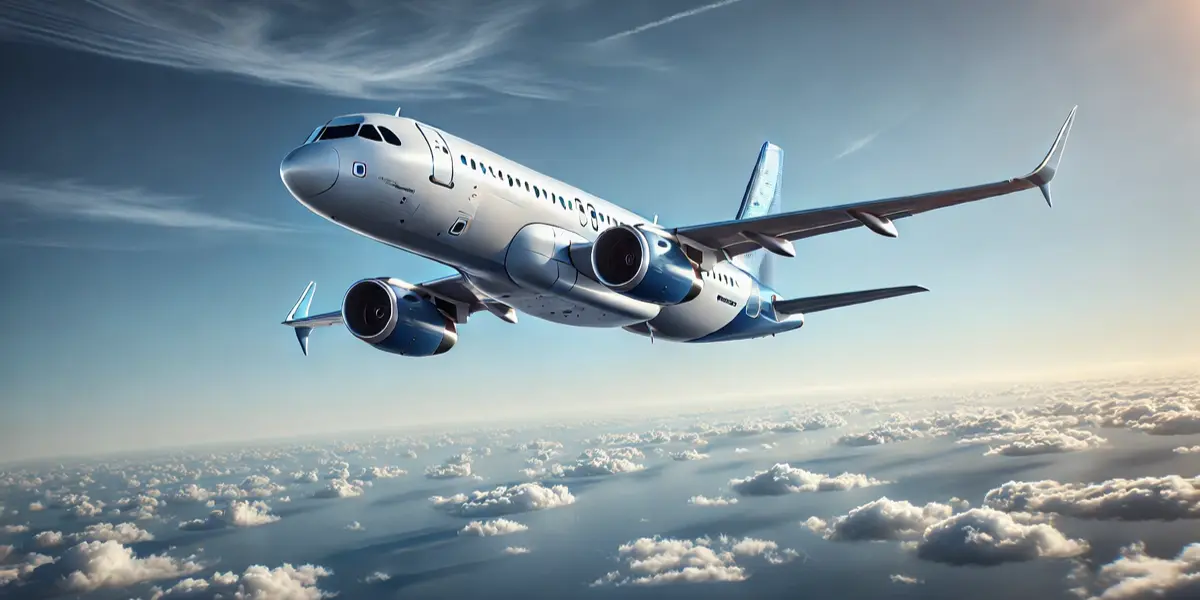Introduction
The Airbus A320 is one of the most iconic commercial aircraft in the world. Since its introduction in the late 1980s, it has transformed the aviation industry with its cutting-edge technology, superior fuel efficiency, and innovative design. The A320 family is widely used by airlines across the globe for short to medium-haul routes, making it one of the best-selling aircraft of all time. This article takes an in-depth look at the Airbus A320, exploring its history, technology, design, and impact on the aviation industry.
The Birth of the Airbus A320
The idea for the Airbus A320 was conceived in the late 1970s when Airbus identified a growing demand for a fuel-efficient, narrow-body aircraft. At the time, Boeing’s 737 was the dominant player in this category, and Airbus wanted to create an aircraft that could compete directly with it. Airbus officially launched the A320 program in March 1984, and the prototype took to the skies on February 22, 1987. After rigorous testing, the aircraft received certification and entered commercial service with Air France on March 28, 1988.
Key Technological Innovations
One of the primary reasons behind the A320’s success is its use of revolutionary technologies that set new standards for commercial aviation. Some of the most notable innovations include:
Fly-by-Wire System
The Airbus A320 was the first commercial aircraft to be equipped with a fly-by-wire (FBW) system. Instead of traditional mechanical linkages and hydraulics, FBW uses electronic signals to control the aircraft’s flight surfaces. This advancement provides several advantages:
- Improved safety: The system includes flight envelope protection, preventing pilots from exceeding safe limits.
- Enhanced fuel efficiency: Optimized control surfaces reduce drag and improve aerodynamics.
- Ease of control: The system reduces pilot workload, leading to smoother operations.
Glass Cockpit and Side-Stick Controls
The A320 introduced a glass cockpit, replacing analog dials with digital displays. This modernized cockpit design improved situational awareness for pilots and made operations more efficient. Additionally, Airbus replaced the traditional control yoke with side-stick controls, which made flying more intuitive and reduced cockpit clutter.
Advanced Aerodynamics and Materials
Airbus used composite materials in the construction of the A320, making it lighter and more fuel-efficient. The introduction of wingtip fences and later Sharklets (advanced winglets) further improved aerodynamics, reducing fuel consumption by up to 4%.
Variants of the A320 Family
The A320 family consists of several models, each catering to different airline needs. Airbus expanded the original A320 into a family that includes:
Airbus A318
- The smallest member of the A320 family
- Seating capacity: 107-132 passengers
- Designed for short-haul routes with lower passenger demand
Airbus A319
- Slightly larger than the A318
- Seating capacity: 124-156 passengers
- Offers a balance between range and capacity, suitable for both domestic and international routes
Airbus A320
- The standard model of the family
- Seating capacity: 140-180 passengers
- Widely used for short and medium-haul flights
Airbus A321
- The largest variant of the A320 family
- Seating capacity: 185-244 passengers
- Designed for high-density routes, competing with larger aircraft like the Boeing 757
Airbus A320neo Family
In 2010, Airbus introduced the A320neo (New Engine Option) series, featuring more fuel-efficient engines and improved aerodynamics. The A320neo reduces fuel consumption by 15-20%, making it an environmentally friendly choice for airlines.
Performance and Specifications
The A320 is designed for efficiency, reliability, and passenger comfort. Below are some key specifications:
- Length: 37.57 meters (A320)
- Wingspan: 35.8 meters (with Sharklets)
- Range: Approximately 3,300 nautical miles (6,100 km)
- Maximum Takeoff Weight (MTOW): 78,000 kg
- Engines: CFM International CFM56 or International Aero Engines V2500 (A320ceo); Pratt & Whitney PW1100G-JM or CFM LEAP-1A (A320neo)
Global Popularity and Production
The A320 family is one of the most successful aircraft programs in history. Airbus has received over 15,000 orders, with more than 9,800 aircraft delivered to date. The aircraft is assembled in multiple locations, including:
- Toulouse, France
- Hamburg, Germany
- Tianjin, China
- Mobile, USA
The A320’s flexibility, efficiency, and commonality with other Airbus models make it a favorite among low-cost carriers and full-service airlines alike.
Impact on the Aviation Industry
The A320 has reshaped the aviation industry in several ways:
- Increased competition: Forced Boeing to modernize the 737 series to keep up with Airbus’s advancements.
- Operational efficiency: Airlines benefit from reduced fuel costs, lower maintenance expenses, and faster turnaround times.
- Improved passenger experience: The A320’s quieter engines and spacious cabin design provide a more comfortable journey.
Future of the A320
Airbus continues to innovate, exploring new technologies to improve the A320 family. Future developments may include:
- Hydrogen-powered aircraft: Airbus is researching hydrogen propulsion as part of its ZEROe initiative.
- Further aerodynamic improvements: New wing designs could increase fuel efficiency even further.
- Autonomous flight technology: Advancements in artificial intelligence and automation could reduce pilot workload.
Conclusion
The A320 is a game-changer in commercial aviation. Its advanced technology, fuel efficiency, and passenger-friendly design have made it one of the most successful aircraft in history. As Airbus continues to enhance the A320 family, the aircraft is set to remain a dominant force in global air travel for decades to come.
For More Information:
https://infoskol.com/discovering-the-best-travel-destinations-for-2023/










